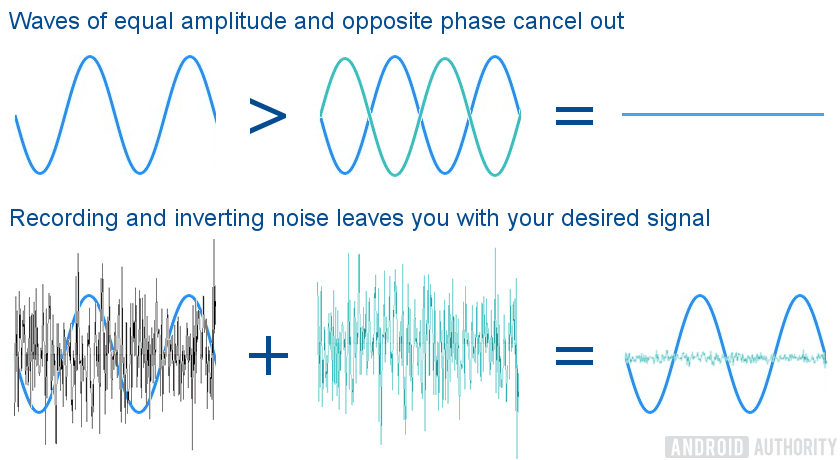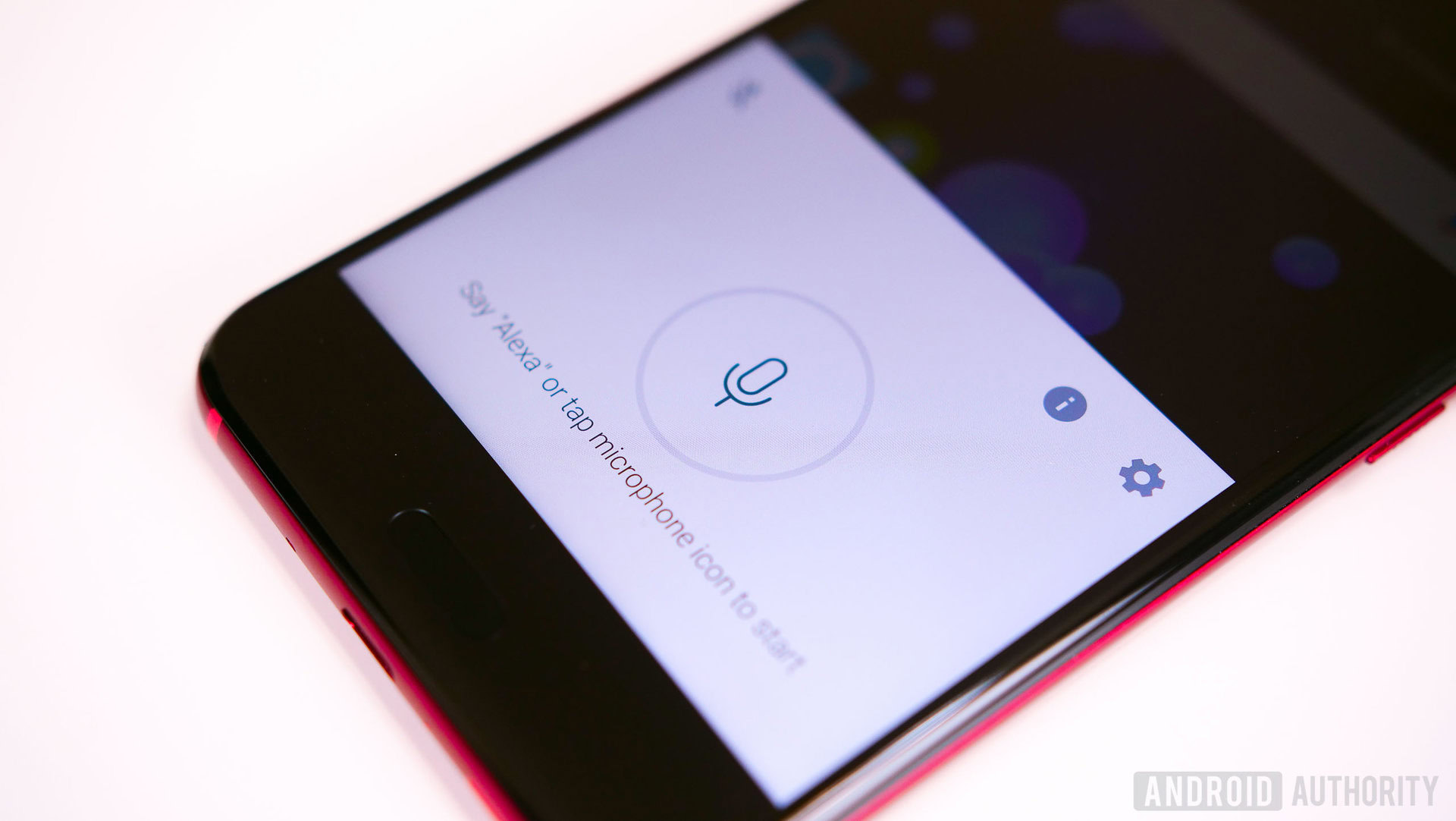Affiliate links on Android Authority may earn us a commission. Learn more.
Why noise cancellation is the most important tech in mobile right now

There’s tons of tech packed into your smartphone, from processors to modems, and even dedicated parts to monitor your phone’s gyroscope sensors. Audio hardware is heavily integrated into mobile today too, but an overlooked yet essential technology packed into all our phones is noise cancelling capabilities.
Noise cancellation is typically associated with wireless headphones, but it’s a crucial part of other gadgets too, including your smartphone. It’s used for everything from calls to powering smart assistants. It’s perhaps the most important technology packed inside modern gadgets.
What is noise cancellation?
It’s in the name— this technology is designed to cancel out background noise so you can hear more clearly. But achieving this can be considerably more involved than it sounds.
First, a primer on how it works. One of the basic laws of physics is that waveforms of equal amplitude and opposite phase cancel out. In other words, if I take at an instance of a wave with a peak of 1 volt and combine that with an inverted wave with a voltage of -1V, I end up with 0 volts. The two cancel each other out. With noise cancellation, the theory is that if we can capture the background noise with a mic, invert the signal phase by multiplying it by -1, and then adding that back to our original signal, we can cancel out the noise. Simple enough.

The theory breaks down a little when we leave the theoretical and enter the real world. Microphones are imperfect, electronic conversion introduces noise of its own, and the phase of the cancellation waveform leaving the speaker might not perfectly line-up with the phase of the noise once it reaches your ear. These systems need to be finely tuned, but even then you won’t ever see 100 percent cancellation. Instead, between -20 and -30 dB of noise reduction is quite common, which cuts the background volume anywhere from 1/16th to 1/32nd. A considerable amount.
Narrower bandwidths allow for more attenuation or noise reduction, while wider bandwidths cover more frequencies but can’t reduce the amplitude as much. This is important to consider when understanding the pros and cons of say, trying to filter out all the audible background noise or just removing the noise around the frequencies of the human voice.

Inside your phone
If you still make calls on your smartphone, you’ll hopefully have noticed that it’s pretty easy to hear what’s being said, and that you’re coming through nice and clear on the other end. Improvements in call quality have a bit to do with this, but crystal clear calls are also down to your phone employing active noise cancellation to remove some of the background noise when you hold your phone up to your ear. Phones have been employing this technology for a number of years, and it keeps on improving.
Noise cancellation is essential for making sure you can hear and be heard while taking calls in busy environments.
In addition to the main microphone for recording voice, your smartphone comes equipped with additional microphones to assist with noise cancellation. The recordings from these mics can be used in the way described above, canceling out background noise around you. This same background information can also be used to cancel out the noise that’s picked up by the voice mic you’re speaking into, but inverting the noise signal and combining it before bending the voice packet off over your network.
In addition to noise cancelation, information picked up from secondary microphones can also be used to automatically adjust call volume based on background noise levels and attempt to filter out howling wind. Many of these features are packed into smartphone SoCs from the likes of Qualcomm and others, making them readily available in most smartphones.
Multi-microphone setups serve another purpose too: localized voice for smart assistants. Multi-microphones are essential for locating the direction of an incoming voice. This information can then be used to discern what’s background noise, even if it’s other voices or a TV, which is then filtered out to provide the cleanest possible source for the voice recognition algorithms.

In your accessories
Clearly then, the same applies to smart home products like the Google Home and Amazon Echo. As well as directional speech detection, these devices employ similar noise reduction and echo cancellation techniques to what you’ll find in your smartphone. Alexa implements up to 6 omnidirectional microphones in its design, offering better speech detection and noise reduction characteristics than your typical smartphone.
Popular smartphone accessories from wireless headphones to smart home assistants rely on this technology.
Noise cancelling technology is seen as the must-have addition to your Bluetooth headset these days, and with good reason. In addition to the blocking out general background noise, the filters can be tailored to the specific use case of a headset. For example, fitness headphones might not want to completely block out typical traffic noises for the safety of runners, but those designed for home or travel might focus on a wider range of frequencies.
I was fortunate enough to trial Qualcomm’s Hybrid ANC technology recently. The design includes both an internal and external microphone, forming a feedback network. This actually reduces the total noise attenuation compared to an equivalent feedforward design, but offers a very consistent wideband to block out a huge range of audible sounds. The demo I experienced almost completely blocked out loud jet engine noises, making it easy to listen to music in a noisy environment, even at low volumes.
The applications for noise cancellation goes beyond consumer electronics. Industrial applications, such as hearing safety can benefit from monitoring and noise blocking, as can medical uses such as hearing aides. It’s just that useful.
Wrap up
Noise cancellation is certainly an underappreciated technology in smartphones. Most of us probably use it several times each day without even noticing. Whether you’re a regular voice caller, smart-assistant-dependant, or wireless music enthusiast, the quality of your favorite services wouldn’t be quite the same without this invisible technology. It’s enabling a whole new wide world of voice assisted technologies in growing markets like the smart home and hearables, so expect to hear more about it in the future.